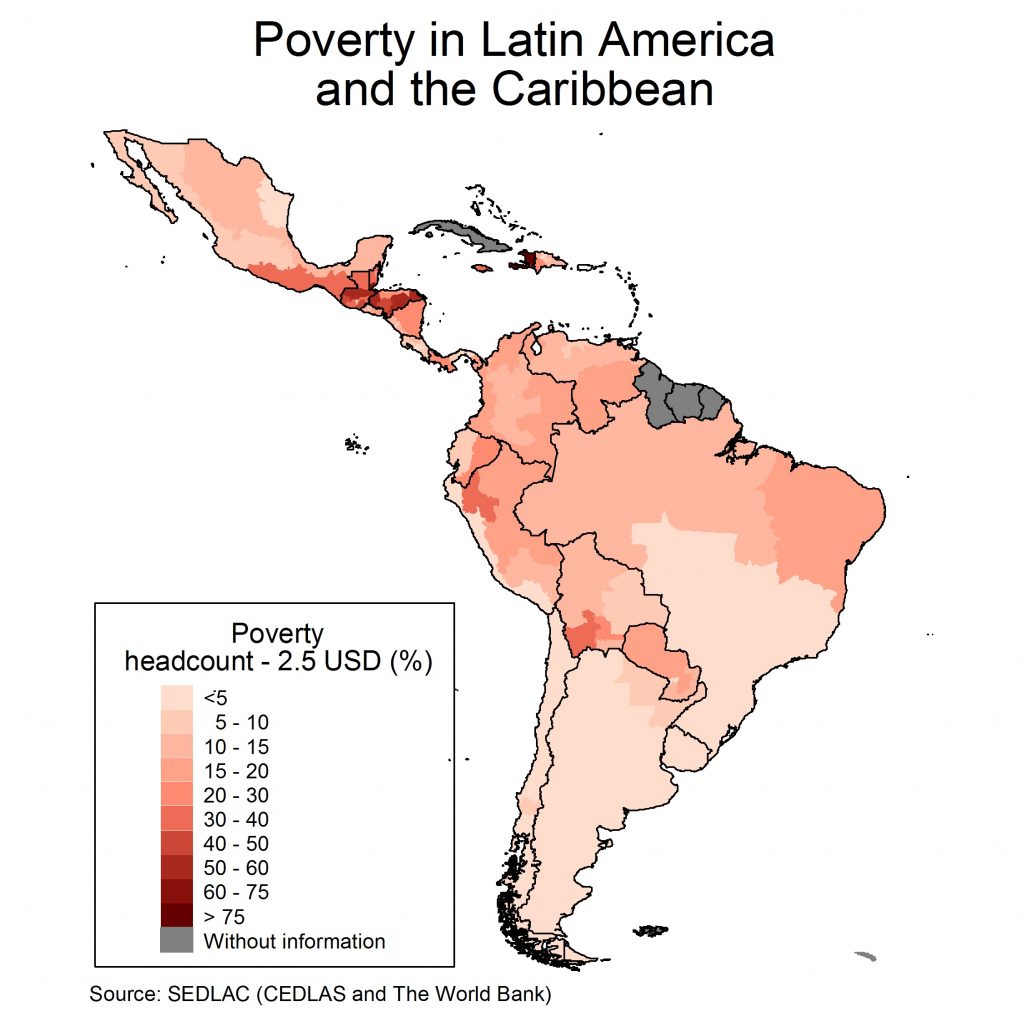RIO DE JANEIRO, BRAZIL – Latin America continues to be one of the most unequal regions in the world, and poverty plays a major role in this respect. While in some countries the majority or a vast minority of the population lives in some level of poverty, in others it is virtually wiped out or in very limited numbers.
However, one must first put into perspective what is perceived as poverty. When this phenomenon is mentioned, it is implicitly limited to extreme poverty, which is the most severe aspect of this situation.
However, the World Bank considers that there are less extreme levels of poverty other than living on less than US$1.90 per day: severe poverty, which means living on less than US$3.20 per day, and milder poverty, which includes less than US$5.50 per day.
Geographically, the data also help to establish certain patterns in certain areas that relate to specific causes.
For instance, the duality in Central America: the northern republics — Honduras, Guatemala, Nicaragua and El Salvador — are marked by very high levels of poverty; on the contrary, Costa Rica and Panama have contained figures. The former have poorly industrialized economic models, as well as high corruption and violence rates, hindering the development of policies from reducing the situation.
However, the Costa Rican and Panamanian states have found stable development pathways with tertiarized economies, which has provided them with greater means to tackle impoverished pockets.
Disparities also exist among the great Latin American powers. Countries such as Mexico maintain high impoverished population levels, as does Venezuela, although in this case, this rapid increase in recent years is due to the serious crisis that the country is experiencing.
Colombia and Brazil are on average levels in the region, and the countries of the Southern Cone — Argentina, Chile, and Uruguay — have succeeded in reducing poverty the most, as well as shown the greatest economic dynamics historically in the Latin American region.


